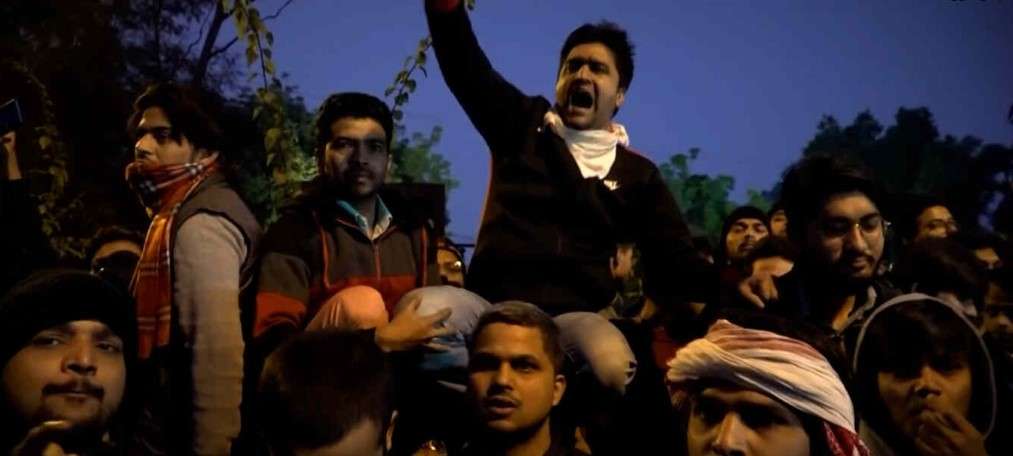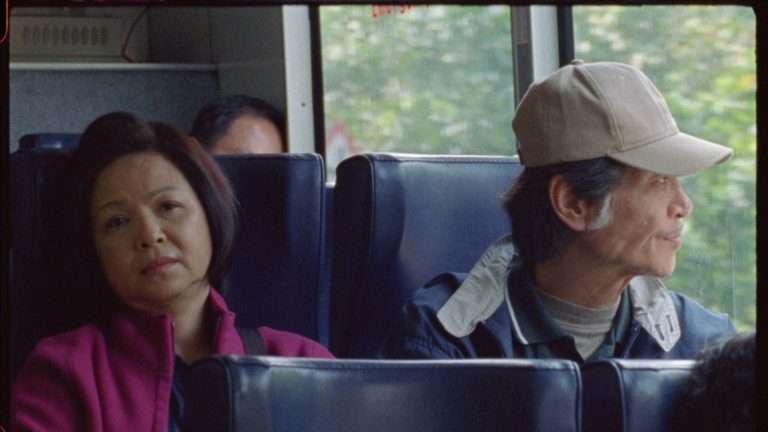At the very outset of Ehraz Zaman’s documentary, “In A Dissent Manner,” we are treated to an aerial perspective capturing the esteemed Aligarh Muslim University. An endorsement video follows — spotlighting the university’s inception, foundational principles, enduring legacy, and profound importance in the lives of numerous Muslims nationwide. The video adeptly delineates the expansive geographical expanse of the institution and highlights its secular outlook despite its status as a minority establishment. Furthermore, it sheds light on the university’s integral function as a convergence point, accommodating students from various corners of the nation.
Yet, within a mere minute of the endorsement commencement — an abrupt transition follows, placing us squarely amid student protests against the draconian CAA-NRC and the subsequent intense police brutality. It is replete with tear gas discharges, stone pelting, officers advancing onto campuses, ruthless harassment, selective detention, and bullying of students beyond any reasonable measure. It constitutes a striking opening to the documentary, characterized by its unrelenting and direct narrative approach. With no reservations, it exposes the established order — holding it culpable for the tumultuous events of the night of December 15, 2019.
“In A Dissent Manner” meticulously recounts the incursion of the Rapid Action Force breaching the university gates. The RAF forcibly entered, assailing students, extracting them forcefully, subjecting them to brutal beatings, vandalizing their property, and hurling egregious insults. The documentary also elucidates the partisan investigation that ensued — revealing how numerous students faced unwarranted detentions and are still dealing with FIRs filed against them. It intricately portrays the orchestrated nature of the assault — aimed at suppressing a peaceful uprising and stifling students who were merely exercising their right to question the prevailing order.
“In A Dissent Manner,” which has graced prestigious film festivals such as the Kerala Documentary Festival, Indian Documentary Film Festival Bhubaneswar, Kolkata Film Festival, and Doc. World, among others, stands apart from the plethora of films that merely function as protest showreels, reducing storytelling to a mere instrument of activism through a montage of newspaper clippings, speeches, CCTV footage, and a chronicle of prevailing political occurrences. Unlike those, it does not compromise its narrative potency. Instead, it relies on in-depth, first-hand accounts to rescue itself from such a fate.
The accounts provided by longstanding lecturers at Aligarh Muslim University, who have witnessed its evolution into a profoundly secular and democratic space over the decades, add a compelling layer to the narrative. Their experiences resonate with trauma as they recount the disheartening transformation of the university into a veritable war zone, succumbing to the pervasive influence of fascism. Through their voices, the film transcends the superficiality of conventional protest documentaries, delving into the complex nuances of an institution’s metamorphosis and the impact on individuals who have been integral to its journey. In doing so, it elevates itself beyond a mere activism platform, emerging as a compelling exploration of the intersection between personal narratives and broader sociopolitical shifts.

Amidst these accounts, a particularly distressing narrative unfolds, depicting the invasive actions of law enforcement. Students vividly recount instances where officers forcefully entered hostel rooms, resorting to threats of breaking doors down. A chilling atmosphere permeates the recollections as one student remembers the ominous ultimatum delivered by the police: to open the doors voluntarily or face gunfire. Adding to the gravity of the accounts, another student recollects the brutal altercation that left his right hand significantly damaged. What follows is equally unsettling, revealing a callous disregard for medical counsel. Despite recommendations from attending doctors for immediate plastic surgery, the officers ignored this advice. Instead, they opted for a minor operation, a decision hauntingly marked by excruciating pain as anesthesia was conspicuously absent.
This episode unveils a disturbing facet of authority — portraying the officers’ neglect of the well-being of those under their charge. The film takes a darker turn as it exposes the state’s discriminatory practices — systematically targeting and subjecting students to maltreatment. The unveiled reality serves as a reminder of the abuse of power, casting a shadow over the supposed safeguards of justice and protection.
Ehraz Asmaduz Zaman, who makes his debut with this independent documentary, approached the subject matter with a discerning sensitivity and urgency. The individuals, both students and lecturers, who share their experiences of trauma and oppression at the hands of authorities convey a remarkable sense of ease and comfort. Furthermore, filmmaking is characterized by neither sensationalism nor simplification; instead, it adopts a direct approach — enabling Zaman to portray the struggles of the victims without any romanticization or aestheticization. This stands in stark contrast to documentaries that lean towards gratuitous depictions of suffering. It is truly an assured debut — allowing the narrative to unfold organically — a narrative that holds substantial significance.
“In A Dissent Manner” also constitutes a narrative that remained conspicuously absent from mainstream media coverage. The prominent central universities, such as Jamia and JNU, commanded the majority of attention — eclipsing any mention of the police brutality that transpired at Aligarh Muslim University. In this context, Zaman documents not only a narrative of significant importance but also one that is personal — given his roots in Aligarh and his status as a B.Com student during the harrowing events.
Not surprisingly, the documentary carries a deeply personal resonance, evident in the profound impact it left on spectators during its inaugural screening in Delhi. As the credits rolled, a sense of heaviness pervaded the audience. The last shot of “In A Dissent Manner” amplifies this emotional weight. It freezes on a still frame, capturing the conclusion of a protest meeting commemorating the second anniversary of the police brutality witnessed on campuses like Jamia and Aligarh. Within this frame, a group of women engages in a significant discussion while a few individuals clear the space. The scene is enveloped in a profound silence — an homage to the losses incurred that night and a prelude to the impending revolution that’s yet to unfold.


![The Protector Review [2005]: An Adrenaline-Fuelled & Action-Packed Muay Thai Mayhem](https://79468c92.delivery.rocketcdn.me/wp-content/uploads/2018/08/tom-yum-goong-screenshot-1-768x515.jpg)


![Sanju Review [2018]: Stellar Performances Elevate Light Biopic](https://79468c92.delivery.rocketcdn.me/wp-content/uploads/2018/07/SANJU_HOF_1-768x327.png)

![Climax [2018]: ‘MAMI’ Review – The Greatest Cinematic Experience of the Year](https://79468c92.delivery.rocketcdn.me/wp-content/uploads/2018/11/climax_still_01-768x384.jpg)